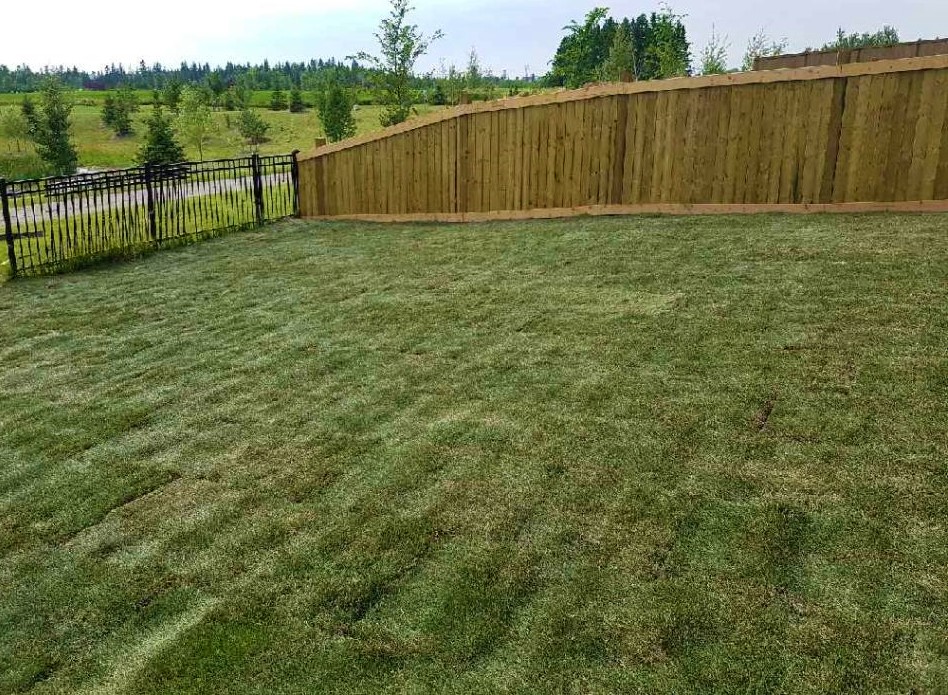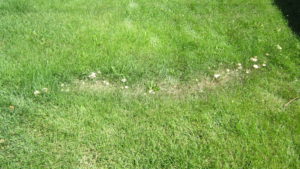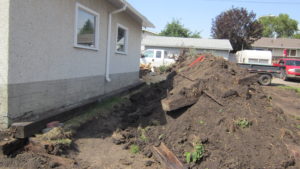
Are you noticing water building up along your home’s foundation? Is the slope of your yard down towards your home? These are signs that your home needs regrading! Read on for information on why re-grading is so important to protecting your home.
Grading a newly built home!
It is very important to have a proper slope around the foundation of your home. The slope should be highest at the foundation of your home and lead down away from your home. A final grade is what new homes require for their landscaping. This is when landscaping companies (like us) ensure that the dirt around your home is sloped so that water drains away from your home. Once the final grade is done, then flower beds, grass, and other landscaping details can be installed. Final Grade is required before you can install other Landscaping details. Here are the requirements of the City of Edmonton: https://www.edmonton.ca/business_economy/commercial_lot_grading/final-grade-approval.aspx
Below is an example of a final grade and the finishing landscape details done by Nexstep Landscaping:
Regrading older homes
A regrade is needed when the slope around your home flattens out or recedes towards your home’s foundation over time. We find this a lot with older homes. If you’re planning on updating your landscaping yourself, be sure to keep in mind the slope of your yard.
It’s all about the water!
The slope from your foundation down towards your yard is all about guiding water away from your home! If you have low spots against your foundation, where water can gather, this water can creep into your basement and cause damage to the foundation of your home. It’s important that you keep your yard slightly sloped as well to encourage run off from melting snow, or rain to lead towards the street (which has drains) or the alley where the water can make its way into the gravel. Look at the photos below. See how we made sure the ground where we put the sod leading from the fence/house is sloped? This ensures water is guided to the street rather than building up on the fence.








 2. Composite decking lasts longer than wood decks!
2. Composite decking lasts longer than wood decks! 3. Composite Decking Is Environmentally Friendly!
3. Composite Decking Is Environmentally Friendly!




 Perennials Acting Like Annuals!
Perennials Acting Like Annuals! Do Your Research!
Do Your Research!













